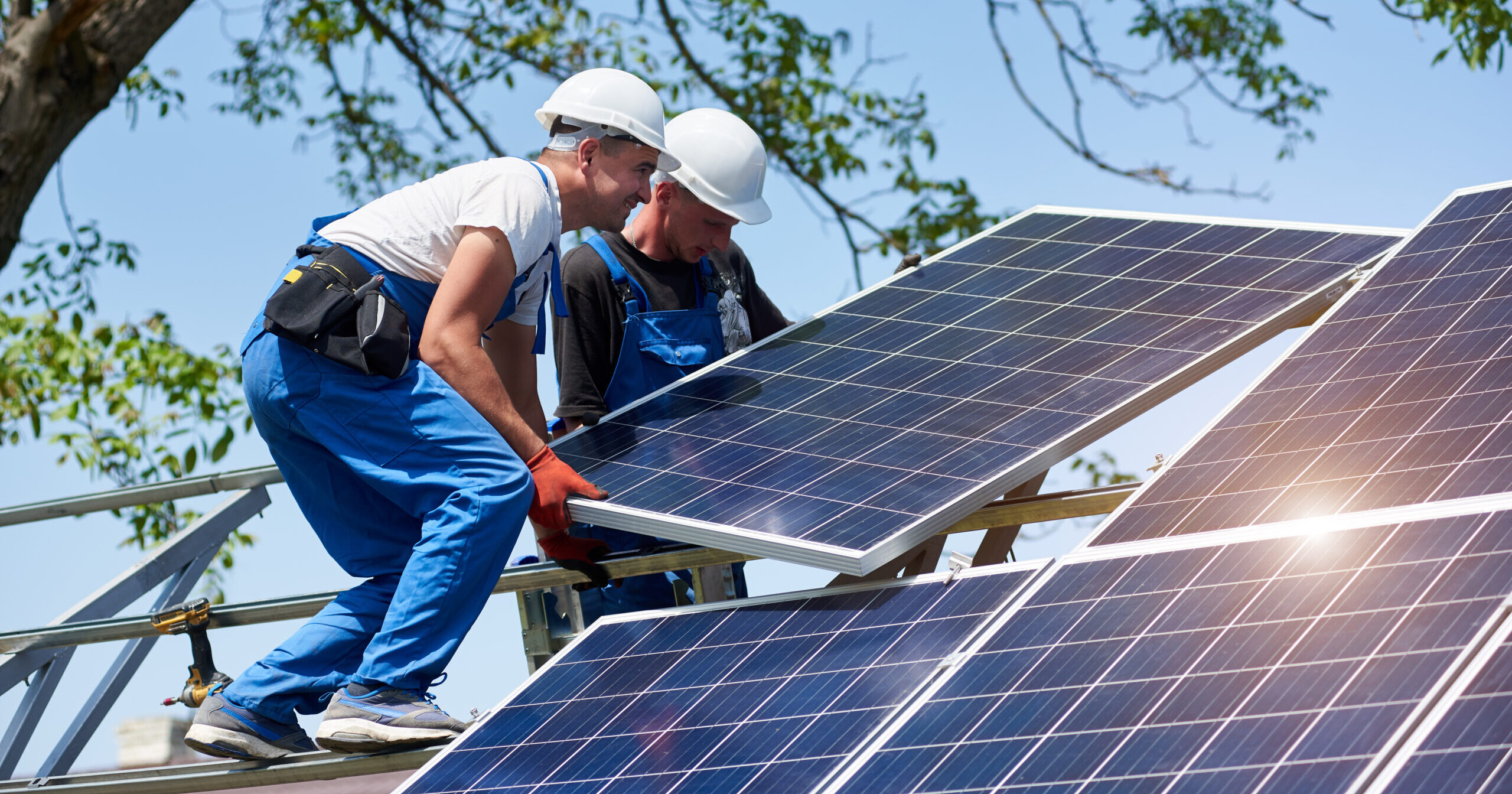Energy demand is growing. Can virtual power plants help? – marketplace.org
Addressing Texas’s Escalating Energy Demand Through Sustainable Innovation
The Challenge of Rising Consumption
Texas is experiencing unprecedented growth in electricity demand, driven by a confluence of factors that strain the state’s energy infrastructure. The Electric Reliability Council of Texas (ERCOT) projects that the state’s monthly energy demand will approximately double by 2030. This surge presents a significant challenge to maintaining a stable and reliable power supply, directly impacting progress towards several Sustainable Development Goals (SDGs).
- Population and Economic Growth: A thriving economy and growing population increase overall energy consumption.
- Industrial Expansion: The construction of new, energy-intensive data centers adds a substantial load to the grid.
- Electrification of Transport: Increased adoption of electric vehicles (EVs) creates new peaks in electricity demand, particularly for residential charging.
The Virtual Power Plant (VPP) Model: A Strategy for Sustainable Energy Management
A Decentralized Approach Aligned with SDG 7
In response to these challenges, energy companies are implementing innovative strategies focused on demand-side management and decentralized resources. The Virtual Power Plant (VPP) model represents a paradigm shift from constructing new centralized power plants to aggregating and coordinating distributed energy resources (DERs) within homes and businesses. This approach is a direct contribution to SDG 7 (Affordable and Clean Energy) by enhancing energy efficiency and ensuring reliable power without relying solely on new, large-scale generation projects.
Energy provider NRG is pioneering this initiative in Texas, aiming to build a 1GW VPP by 2035. This “plant” is formed by networking thousands of individual home energy devices, which, when acting in concert, can provide the capacity of a conventional mid-sized power plant, thereby improving grid stability and resilience.
Technological Framework for a Smarter Grid
The VPP model leverages advanced technology to optimize energy consumption, a key tenet of SDG 9 (Industry, Innovation, and Infrastructure) and SDG 11 (Sustainable Cities and Communities). By building resilient and intelligent infrastructure, VPPs help create more sustainable urban environments.
- Smart Thermostats: These devices are a cornerstone of the VPP. Using machine learning, they automatically pre-cool homes during periods of low energy cost or high renewable energy availability (e.g., midday solar), reducing strain on the grid during peak hours. This maintains customer comfort while optimizing energy use.
- Residential Battery Storage: Home battery systems, such as those included in pilot programs developed by Tesla and others, allow consumers to store energy and dispatch it back to the grid during times of high demand. This not only supports the grid but also enables homeowners to gain a return on their investment in sustainable technology.
- Controlled EV Charging: VPPs can manage EV charging schedules, shifting this significant electrical load away from peak consumption hours to overnight periods or when renewable energy is abundant.
Contribution to Global Sustainable Development Goals
SDG 7: Affordable and Clean Energy
VPPs directly advance SDG 7 by creating a more efficient, reliable, and affordable energy system. By managing demand, they reduce the need for expensive “peaker” plants, which are often fossil-fuel-based and costly to operate. This optimization helps keep energy affordable for consumers.
SDG 11: Sustainable Cities and Communities
The aggregation of smart homes into a VPP is a foundational element of a smart city. This network enhances urban resilience by providing a flexible tool to manage energy during extreme weather events, such as the heatwaves that drive record demand in Texas, making communities safer and more sustainable.
SDG 12: Responsible Consumption and Production
The VPP model fundamentally promotes responsible consumption patterns. It shifts the focus from solely increasing supply to intelligently managing demand. By incentivizing and automating energy efficiency at the consumer level, VPPs foster a culture of responsible energy use on a mass scale.
SDG 13: Climate Action
By reducing peak electricity demand and facilitating greater integration of renewable energy sources like solar, VPPs are a critical tool for climate action. An aggregated network of 650,000 smart thermostats can offset the need for a fossil-fuel power plant, thereby preventing significant greenhouse gas emissions and contributing to climate change mitigation efforts.
Challenges and Future Outlook
Establishing Fair Compensation Models
A primary challenge for the widespread adoption of VPPs is the development of a robust framework for compensating customers. The value that aggregated demand reduction and energy dispatch provides to the grid is substantial. Ascribing a monetary value to this contribution and ensuring customers are fairly paid for their participation is a complex but critical step for scaling these programs.
Scaling for Grid-Level Impact
While initiatives from companies like NRG, which currently has approximately 150,000 customers with VPP-enabled devices, represent a significant shift, continued investment and regulatory support are necessary. Scaling these programs to their full potential is essential to “squeeze out juice from everything we can” and build a truly resilient, decentralized, and sustainable energy future for Texas and beyond.
SDGs Addressed in the Article
- SDG 7: Affordable and Clean Energy – The article’s core theme is managing energy demand and supply through innovative, efficient, and cleaner methods.
- SDG 9: Industry, Innovation and Infrastructure – It discusses upgrading energy infrastructure with new technologies (smart homes, VPPs) to make it more resilient and sustainable.
- SDG 11: Sustainable Cities and Communities – The initiative is based in a large urban area (Houston) and aims to make energy consumption in homes more efficient and sustainable, contributing to the overall resilience of the city.
- SDG 13: Climate Action – The article highlights the need to manage energy demand driven by extreme weather (“Hot Texas summers”) and build resilience against climate-related events that strain the power grid (like the “2021 winter storm”).
Identified SDG Targets
SDG 7: Affordable and Clean Energy
-
Target 7.2: By 2030, increase substantially the share of renewable energy in the global energy mix.
- The article supports this target by explaining how virtual power plants (VPPs) can better utilize renewable energy sources. It states that pre-cooling a house when the sun is high saves money because “solar energy is cheaper and is only abundant in the daytime,” implying the VPP system helps integrate this variable power source into the grid more effectively.
-
Target 7.3: By 2030, double the global rate of improvement in energy efficiency.
- The entire concept of the VPP described in the article is a strategy for energy efficiency. Instead of building new power plants, the program focuses on managing demand to “make the most of every kilowatt.” The article notes that aggregating 650,000 thermostats is equivalent to a “middle-of-the-road power plant,” demonstrating a massive efficiency gain by avoiding new construction and generation.
-
Target 7.a: By 2030, enhance international cooperation to facilitate access to clean energy research and technology… and promote investment in energy infrastructure and clean energy technology.
- The article describes significant investment in clean energy technology. NRG is investing in a “Smart Home” to test new tech, providing customers with free smart thermostats, and developing a sophisticated VPP system that uses machine learning. This represents a direct promotion and investment in clean energy technology and infrastructure.
SDG 9: Industry, Innovation and Infrastructure
-
Target 9.1: Develop quality, reliable, sustainable and resilient infrastructure… to support economic development and human well-being.
- The VPP initiative is presented as a way to create a more reliable and resilient electricity grid. By managing peak demand, it helps prevent outages like the one caused by the “2021 winter storm.” This technological infrastructure enhancement directly supports the reliability of the energy supply, which is crucial for economic activity and well-being.
-
Target 9.4: By 2030, upgrade infrastructure and retrofit industries to make them sustainable, with increased resource-use efficiency and greater adoption of clean and environmentally sound technologies…
- The article is a case study of this target in action. The energy industry is retrofitting its approach by “pooling at-home energy resources” and adopting clean technologies like smart thermostats, residential batteries, and machine learning algorithms. This upgrades the existing energy infrastructure to be more sustainable and resource-efficient.
SDG 11: Sustainable Cities and Communities
-
Target 11.b: …increase the number of cities and human settlements adopting and implementing integrated policies and plans towards… resource efficiency, mitigation and adaptation to climate change, resilience to disasters…
- The VPP program in Houston is an example of an integrated plan for a large urban settlement. It addresses resource (energy) efficiency, helps mitigate climate impact by optimizing energy use, and builds resilience to disasters like extreme heatwaves and winter storms that threaten the power grid.
SDG 13: Climate Action
-
Target 13.1: Strengthen resilience and adaptive capacity to climate-related hazards and natural disasters in all countries.
- The article explicitly links the need for these energy solutions to climate-related hazards. It mentions “Hot Texas summers” pushing demand to new heights and the “2021 winter storm that caused massive outages.” The VPP is a strategy to strengthen the grid’s resilience and its adaptive capacity to handle the strain caused by these extreme weather events.
Indicators for Measuring Progress
-
Total capacity of the virtual power plant.
- The article provides a specific, measurable indicator by stating, “The company aims to have 1GW of electricity capacity through its virtual power plant initiative by 2035.” This quantifies the scale and impact of the energy efficiency and infrastructure resilience program.
-
Number of participating customers or devices.
- Progress can be tracked by the number of participants in the VPP. The article states, “Currently, roughly 150,000 NRG customers have virtual power plant-enabled devices.” This serves as a baseline indicator for the adoption of this sustainable technology.
-
Projected energy demand growth.
- The article mentions that the state’s monthly energy demand is “expected to roughly double by 2030.” This figure serves as a key indicator of the challenge that VPPs and other efficiency measures are designed to address. Progress could be measured by how well the grid meets this demand without a proportional increase in traditional generation.
-
Integration of residential energy supply.
- The pilot program allowing people with home batteries to “get paid for the small amounts of electricity they send back into the grid” implies an indicator related to the amount of distributed energy being supplied back to the grid. Measuring the total kilowatt-hours supplied by residential batteries would track progress on this front.
Summary Table: SDGs, Targets, and Indicators
| SDGs | Targets | Indicators |
|---|---|---|
| SDG 7: Affordable and Clean Energy |
7.2: Increase share of renewable energy. 7.3: Double the rate of improvement in energy efficiency. 7.a: Promote investment in clean energy technology. |
– Total capacity of the virtual power plant (Goal: 1GW by 2035). – Amount of residential energy sent back to the grid. |
| SDG 9: Industry, Innovation and Infrastructure |
9.1: Develop quality, reliable, sustainable and resilient infrastructure. 9.4: Upgrade infrastructure for sustainability and resource-use efficiency. |
– Number of customers/devices in the VPP program (Current: 150,000). – Capacity of the VPP as a non-traditional infrastructure asset (1GW goal). |
| SDG 11: Sustainable Cities and Communities | 11.b: Increase cities implementing integrated policies for resource efficiency and resilience. |
– The existence and scale of the VPP program in a major city (Houston). – Number of participating households within the urban area. |
| SDG 13: Climate Action | 13.1: Strengthen resilience and adaptive capacity to climate-related hazards. |
– Projected energy demand growth due to climate factors (doubling by 2030). – VPP capacity as a measure of adaptive infrastructure to handle peak demand from extreme weather. |
Source: marketplace.org
![]()
What is Your Reaction?
 Like
0
Like
0
 Dislike
0
Dislike
0
 Love
0
Love
0
 Funny
0
Funny
0
 Angry
0
Angry
0
 Sad
0
Sad
0
 Wow
0
Wow
0












































































